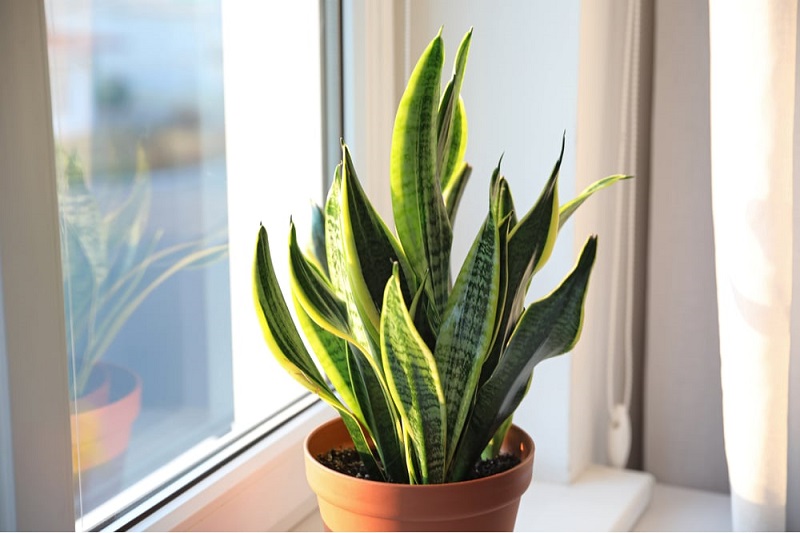
If we were to investigate the essential qualities for choosing a plant, the answer would certainly be: beauty and resistance. In the first case, it is obvious that if we choose a plant as a decorative element, we want it to have bright colors, attractive shapes or an exotic appearance. In the second, it will always be better that they have a certain autonomy and survival skills.
Snake Plant: Description, Cultivation and Care
It is part of the ruscaceae family and has its origin in the tropical regions of Africa and Asia. It can also be found in more temperate areas. The Sansevieria genus includes a large number of species which, while differing considerably from each other, have some characteristics in common: vertically growing pointed leaves, fleshy appearance, and a sort of marbling of the leaves, which arise from a rhizome located under the ground.
Given the great variety within the genus (there are about 50 species), we will make a small list of the best known and their main characteristics:
- Trifasciata: the best known, which you have probably already had the opportunity to know. Its leaves are in the shape of a sword that curves as it rises. The edges are highlighted in yellow and the green surface alternates between light and dark tones.
- Liberica: Its leaves are wider and shorter than those of the trifasciata , and emerge from the ground in the form of a rosette. Its tones are similar to those of the previous species, even if they have small reddish streaks.
- Scabrifolia: The leaves are much more pointed and their color more homogeneous. It does not usually reach a great height.
- Cylindrica: Its leaves come in the form of large green tubes with pointed ends that come out directly from the ground. They can grow fully erect or tilted, depending on the crop.
Even if the Snake Plant is very, very resistant, it is still a living being that, in order to grow and develop, needs at least the most basic care. Let’s see what they are.
How to cure the Snake Plant
Light and location
In this regard, there are several possibilities. It can receive direct sunlight, albeit in moderate doses, to stimulate the intensity of its color. It will also be comfortable in a well-lit room, where it won’t have direct sunlight. It can also live in shaded areas, although this will slow down its development.
Ground
A universal, well-draining substrate or cactus-specific substrate will be the right soil for this plant. To facilitate drainage, you can make holes in the pot or put small pieces of terracotta in the saucer to distance it from the stagnant water.
Temperature
It prefers a warm temperature rather than a cold one. It tolerates summer temperatures well, as long as they are not sweltering. In winter it is not recommended to expose it below 13-14 degrees. Its robustness allows it to withstand the occasional frost with temperatures below zero. It goes without saying that this is absolutely inadvisable and if exposure is prolonged for several days it can be seriously damaged.
Irrigation
Sansevieria does not go crazy for water. Its ability to store water both in the rhizome and in the leaves makes it tolerate drought well. However, standing water in the soil can lead to root rot. The waterings must be well spaced, always allowing the substrate to dry well before a new application. She likes rather dry environments, so it won’t be necessary to steam her leaves or use any other system to increase the ambient humidity level.
Fertilizers and fertilizers
For Sansevieria, a fertilizer to grow and develop will be perfect. Add a diluted dose in watering water monthly during the spring and summer months.
Transplant
When you see that the pot has become too small to hold the roots, it’s time to transplant it into a new pot. This usually happens once a year. If you skip the transplant a few years, it is best to replace the top layer of the earth with new earth.
Parasites
Cochineal is one of the parasites that tend to attack the plant. They are small insects whose presence is given in the form of small spots that can vary depending on the type of cochineal causing the infection: brown and sticky in the case of the brown cochineal, or whitish and fluffy if it is the cottony variety. They can be eradicated by applying a small piece of paper with alcohol or, if the case is more serious, with a soft sponge and mild soap.
Pruning
This plant is usually not pruned. Removing the leaves that wither over time will be enough to prevent the arrival of pests.
The Snake Plant is one of the most popular ornamental plants in the world. Thanks to its resistance and its power of adaptation it is suitable for both the most denied gardeners and the most refined tastes. If you are a fan of the plant kingdom, we are sure you will adopt it soon!
